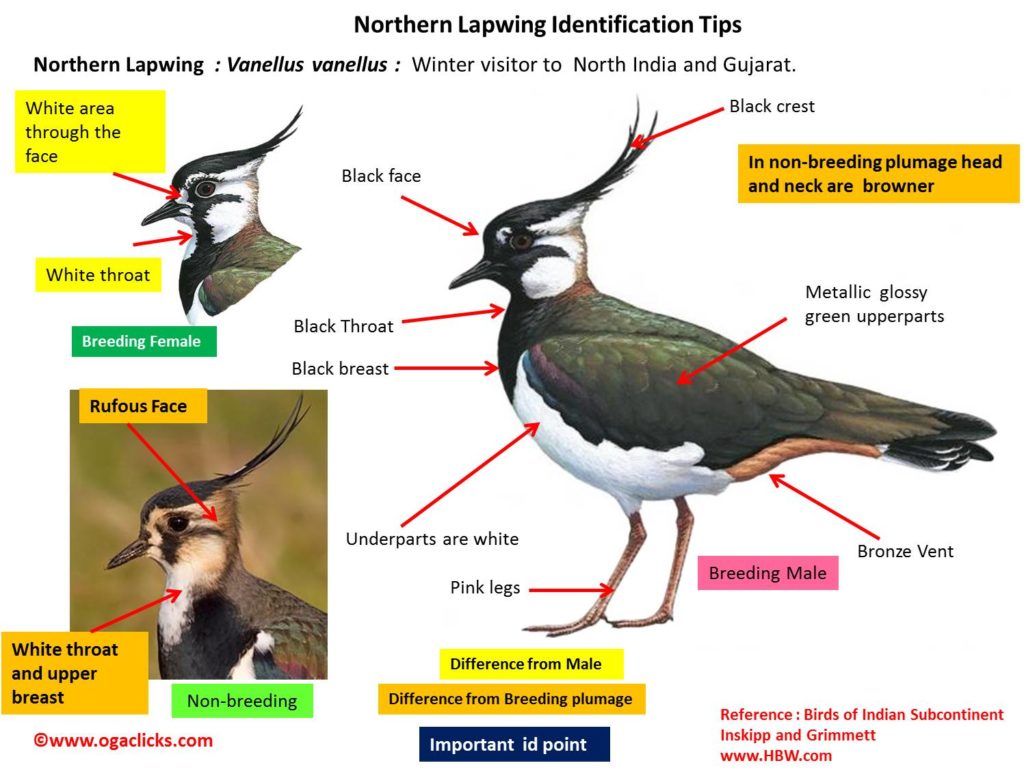
Northern Lapwing Vanellus vanellus
Etymology:
- Vanellus : Latin word for fan like wings derived from vannus –winnowing fan
- Vanellus : Latin word for fan like wings derived from vannus –winnowing fan
Vernacular Names: Pun: Bodal tatihri, Ben: Sabaz titti, Mar: Turewali Titavi
Distribution in India: Winter visitor to Northern India.
Description: Size: 28-31 cm. It has metallic glossy green upperparts, blackish crest and bronze scapulars; very broad wings, especially in breeding males. The female has less distinctive head pattern and white flecks on throat. The non-breeding adult has buff face, short crest, and white chin and throat; upperwing-coverts and scapulars have buff fringes.
Habitat: It is found in breeding season in variety of wide open habitats with short vegetation or bare ground, including various wetlands, heaths, moors, arable and cereal fields, meadows and hayfields . It breeds mainly below 800 m. In non-breeding season found up to 2800 m .
Food Habits: It eats invertebrate prey, primarily earthworms and insects, including larvae and adults of beetles, ants, Diptera flies, moths and crickets; also spiders and snails. It locates prey both visually and aurally, mostly as bird walks or runs, occasionally pausing to probe ground. Rather frequently feeds by foot-trembling. Diurnal and nocturnal; sometimes even primarily nocturnal on bright, moonlit nights, but flocks are more dispersed when feeding at night. It is Kleptoparasitised by Black-headed Gulls.
Breeding Habits: They breed Mar-Jun in Norway and England. The male’s perform dazzling aerial song flight display, during which wingtips produce droning sound and includes a rolling section, as well as dramatic dives and switchbacks. Females may sample many males and territories in the course of a short time span. The Nest is a shallow scrape, lined with some vegetation, sited in short grassy vegetation, in wet areas on slight eminence. They are single-brooded, but will lay replacement clutch if first lost with male taking exclusive responsibility for first brood after young hatch and female for the second. They lay a clutch of four eggs, laid on consecutive or alternate days, clutch completed in five days. The incubation period is 21–30 days, by both sexes, starting once last egg is laid. The chicks tended by both parents, although brooding primarily by female. The fledging period is 33–40 days.
.